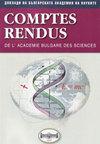适应自然条件的红景天再生体中酚类红景天苷和红景天苷的产生
IF 0.3
4区 综合性期刊
Q4 MULTIDISCIPLINARY SCIENCES
Comptes Rendus De L Academie Bulgare Des Sciences
Pub Date : 2023-10-01
DOI:10.7546/crabs.2023.09.06
引用次数: 0
摘要
红景天(Rhodiola rosea L.)是一种具有多种保健作用的高原药用植物,主要与红景天苷和蔷薇素(rosavin、松香和rossarin)等酚类物质有关。由于对红迭香根茎和根茎的大量采收,导致其自然资源的减少。各种体外和体外培养系统为物种保护和生物活性物质的加速合成提供了新的机会。在本研究中,采用高效液相色谱法测定了红景天体外培养物中红景天苷和红景天苷的含量,并在体外培养的适应再生物中进一步监测了红景天苷和红景天苷的含量。在不同营养培养基上获得的愈伤组织和1月龄再生体的根中未检测到目标次生代谢物。适应再生体的根/根茎在温室中离体培养1年,在山上培养1年、2年和3年,产生的红景天苷(从0.4到1.2%)和红景天苷(从4.3到4.5%)的含量增加。山林3年再生植株红景天苷与红景天苷的比值(1:3.75)接近药典标准1:3。这些结果表明,通过离体繁殖和离体培养获得的玫瑰红属植物具有良好的药物生产前景。本文章由计算机程序翻译,如有差异,请以英文原文为准。
Production of the Phenols Salidroside and Rosavins in Rhodiola rosea Regenerants Ex Vitro Adapted to Natural Conditions
Rhodiola rosea L. is a high-altitude medicinal plant with various health-beneficial effects, associated mainly with the phenolic substances salidroside and rosavins (rosavin, rosin and rosarin). The intensive collection of R. rosea rhizomes and roots to be used in folk medicine and pharmacy has led to a decrease of the species natural resources. New opportunities for species conservation and accelerated synthesis of biologically active substances have been provided by various systems for in vitro and ex vitro cultivation. In this study, the salidroside and rosavins content was determined using HPLC analysis in in vitro cultures of R. rosea and further monitored in adapted regenerants grown ex vitro. The targeted secondary metabolites were not detected in the calli and in the roots of 1-month-old regenerants obtained on different nutrient media. The roots/rhizomes of adapted regenerants grown ex vitro in a greenhouse for 1 year and in the mountain for 1, 2 and 3 years produced increasing amounts of salidroside (from 0.4 to 1.2%) and rosavins (from 4.3 to 4.5%). The salidroside to rosavins ratio (1:3.75) in 3-year-old regenerants grown in the mountain was close to the pharmacopoeial standard ratio of 1:3. These results show that R. rosea plants, obtainted by in vitro micropropagation and grown ex vitro are promising for drug production.
求助全文
通过发布文献求助,成功后即可免费获取论文全文。
去求助
来源期刊
CiteScore
0.60
自引率
33.30%
发文量
181
审稿时长
3-6 weeks
期刊介绍:
Founded in 1948 by academician Georgy Nadjakov, "Comptes rendus de l’Académie bulgare des Sciences" is also known as "Доклади на БАН","Доклады Болгарской академии наук" and "Proceeding of the Bulgarian Academy of Sciences".
If applicable, the name of the journal should be abbreviated as follows: C. R. Acad. Bulg. Sci. (according to ISO)

 求助内容:
求助内容: 应助结果提醒方式:
应助结果提醒方式:


